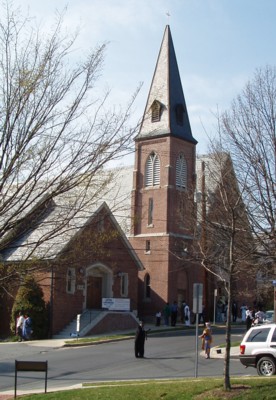
photo credit: David Hill
Civil War Places (Still) in Town
Few Civil War era pictures exist of Rockville. Photography was a still nascent craft at the time. It was expensive relatively and difficult to master with no stock supplies nor standardization. Big cities might have one or two studios and occasionally a traveling photographer might set-up temporarily in a populated area. Most photos from this period are portraits as this was the most common use for capturing images. Also, exposure times were slow so nothing moving, even slowly, could be captured as a clear image. So things such as street scenes or candid images were seldom attempted. Pioneering practitioners such as Mathew Brady and Alexander Gardner were just beginning to take photography into the field during the war, to document it. They are famous for showing horrific post battle scenes, including dead soldiers, to a public naive about the real conduct of warfare. This subject was a good fit to the state of the technology. What better still subjects than no longer animate people. And it was far safer to document the aftermath of battle than be caught in its midst. Plus, as battle was often unpredictable, it took time to move bulky equipment to a site.
Since few contemporaneous photos exist, modern pictures of assorted Civil War era sites are shown here. You may have to apply your imagination to how the original structures appeared, without subsequent additions, modifications or present treatments. [Note: Some period photos appear on the "Then & Now" page (click here).]
| Christ Epsicopal Church on South Washington Street dates from the Civil War and was the site of a significant wartime episode. The tower and sanctuary to the right are the old part of the modern structure. When JEB Stuart's cavalry arrived in Rockville, a number of leading Unionist and vestrymen, including John Higgins (see Higgins House above) and Richard Johns Bowie, secluded themselves. Stuart's troopers, with a list of whom to arrest in hand, discovered these men in the church vestry and called for them to come out, whence they arrested them. The now prisoners were first detained in the courthouse with other arrested Unionists (such as Lawrence Dawson, the Union draft commissioner; Mortimer Moulden, the Union Provost Marhsal, and Thomas Bailey, the postmaster). Later, all prisoners were marched off in Stuart's column. They were subsequently paroled in Brookeville and had to walk back to Rockville. |
|
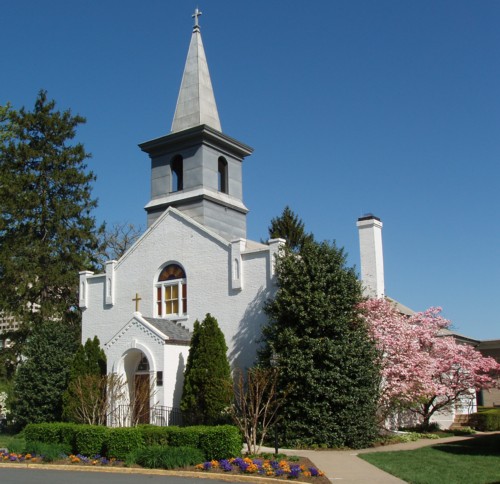 photo credit: David Hill |
St. Mary's Catholic Church has stood here since 1817. It overlooks what many consider the cross-roads of Montgomery County, the intersection of historic Georgetown to Frederick north-south road and Darnestown (and Potomac River) to Washington east-west roads. Today these roads remain vital routes 355 and 28 in the County, even though their names and precise configurations have changed in time. This is the oldest Catholic church and oldest church in continuing use, in Montgomery County. This building did not have a conspicuous role in Civil War events, although it stood as a landmark astride this important road juncture. The author F. Scott Fitzgerald is buried in the churchyard cemetery, just to the left in this picture. |
| Jerusalem Methodist Episcopal Church still stands on Woods Lane. At the time of the Civil War, is was Rockville Methodist Episcopal Church . Its congregation split over moral questions regarding slavery just prior to the Civil War. The congregation retaining services in the church was the anti-slavery branch, believing you could not be a good Methodist and a slave holder. During reconstruction division along race lines, the congregation of this church became predominantly black and withstood a legal case by the former white parishioners to reclaim this church for their use. |
|
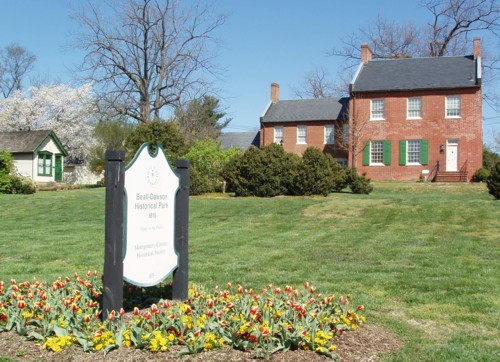 photo credit: David Hill |
Beall-Dawson House was home to the Beall sisters throughout the Civil War era. It was the homestead of a large estate covering much of the West End, north of West Montgomery Drive. The Beall family owned slaves that worked the farm. The house today is home to the Montgomery County Historical Society. It is well preserved and open to the public. Note, in about the middle of this picture is the likely spot that James Hill was shot and collapsed during the Battle of Rockville. He was taken into the house and nursed by the Beall sisters, probably saving his life. Click here for more on this story. |
| Stonestreet Medical Office, was operated by Dr. Edward Stonestreet throughout the Civil War period. Today, this structure stands on the grounds of the Beall-Dawson House (just visible to the left in the picture above) and is outfitted as a museum of 19th century medicine. This building originally stood at the SE corner of Monroe Street and Montgomery Avenue. During the Civil War, Dr. Stonestreet treated many war casualties in addition to this usual civilian patients. He also served as a medical examiner for the Union draft, pronouncing draftees fit (or not) for military service. |
|
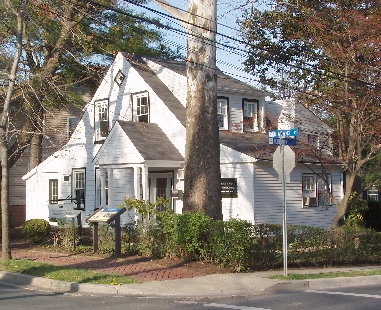 photo credit: David Hill |
Higgins House, the home of John and Dora Higgins and family. The Higgins operated a general store off Commerce Lane. John was a town commissioner and ardent Unionist. He was arrested when JEB Stuart's cavalry came to Town. Dora was left to fend off Confederate troopers from raiding their store, tend to their children, and determine the fate of her husband. Her subsequent letter describing the day, to her mother, is the best civilian account of what occurred. Click here for her letter. Note, the house originally faced Middle Lane. The wing to the right is the enclosed original front porch. The current entrance off Adams Street is a later modification. This was the original side of the house. |
| Peters House, on Adams Street, the home of George Peters. Mr. Peters was a secessionist and was among those arrested and detained (without due process) by Union authorities. Click here for a discussion of these arrests. Notwithstanding this (and perhaps because of it), he is conspicuous for confronting Confederate officers in JEB Stuart's command, that had arrested his Unionist neighbors, arguing for their release or good treatment. |
|
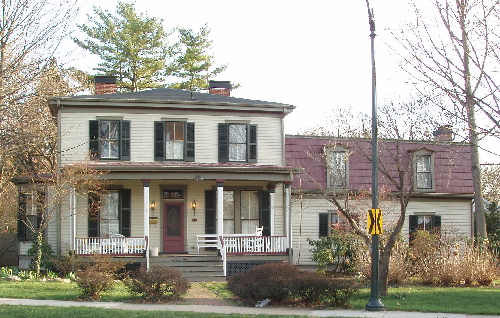 photo credit: David Hill |
Prettyman House, on Jefferson Street, home of the Prettyman family, who were secessionist in loyalties. JEB Stuart and his officers are reputed to have lunch at the house during their visit to Rockville, at the invitation of Mr. Prettyman |
| 5 North Adams Street contains the oldest known structure in Rockville. The wing of the house to the left is the original building and was a log home. The front (now main) portion of the house was enlargement of the original log home. Note that this houses faces West Montgomery Avenue (Commerce Lane then), not Adams Street. The space now between the house and Montgomery Avenue is the original front yard of this lot. This house roughly lines up with the Beall-Dawson house across Adams Street and this distance from Montgomery Avenue is the original set-back of the homes from this busy street. The other house now occupying this space was built on a sub-divison of the former lot and is of more recent age. |
|
Note: It is conspicuous that the remaining Civil War era structures in modern Rockville, are mostly residences and churches. The civic buildings either did not exist by 1865 or were long since rebuilt for larger capacity. The courthouse, Rockville Academy, and the jail (at the NE corner of Maryland Ave. and Fleet St. today) were about the extent of public buildings in 1865. There was no County office building(s), nor City Hall, nor even a distinct post office. The courthouse served all city and county government operations (not just judicial proceedings). The post office was typically in the storefront of whichever person was serving currently as postmaster. Commercial structures from the period are also absent in the modern City. It may be tempting to decry urban renewal for the destruction of the majority of such structures along Rockville's historic Montgomery Avenue main street, and other commercial thoroughfares such as Commerce Lane and Washington Street. While urban renewal took its final toll on the remnants of historic commercial structures, the combination of out-growing the older buildings, a desire to continuously upgrade commercial structures as salesmanship, and the general less substantial construction of many places for business, had pretty well reduced the Civil War era commercial stock of buildings by the mid-20th century. In all, perhaps it is fitting that where Rockville citizens lived and exercised their beliefs and convictions, have more permanence or received more loving care, than other forms of personal endeavor. It signals important values for our town.
© 2006, Peerless Rockville, Historic Preservation Ltd.